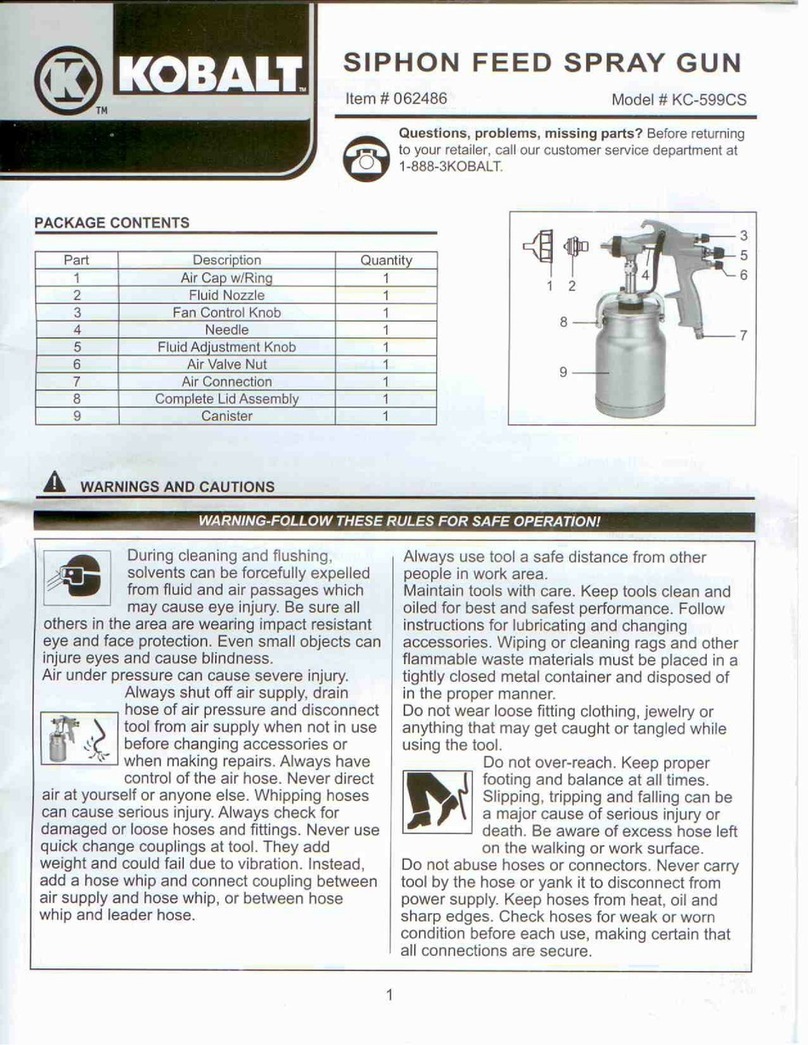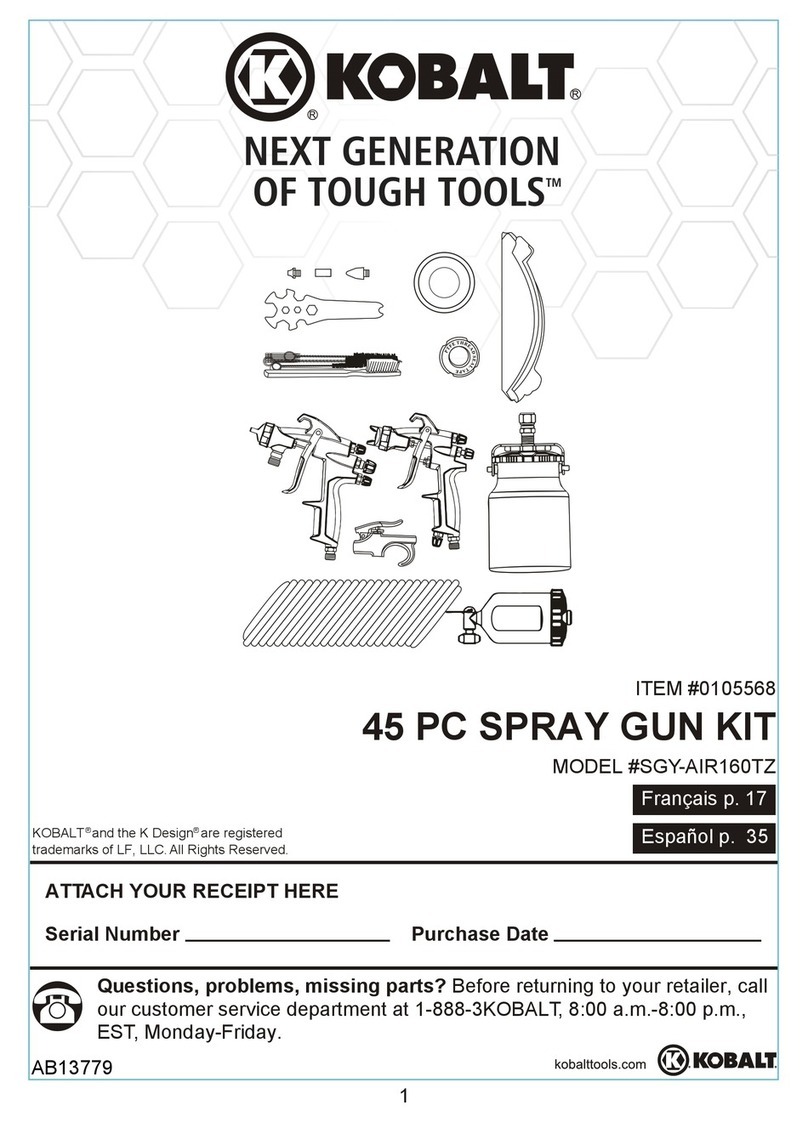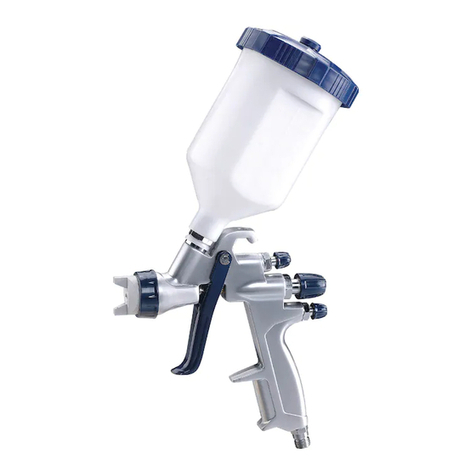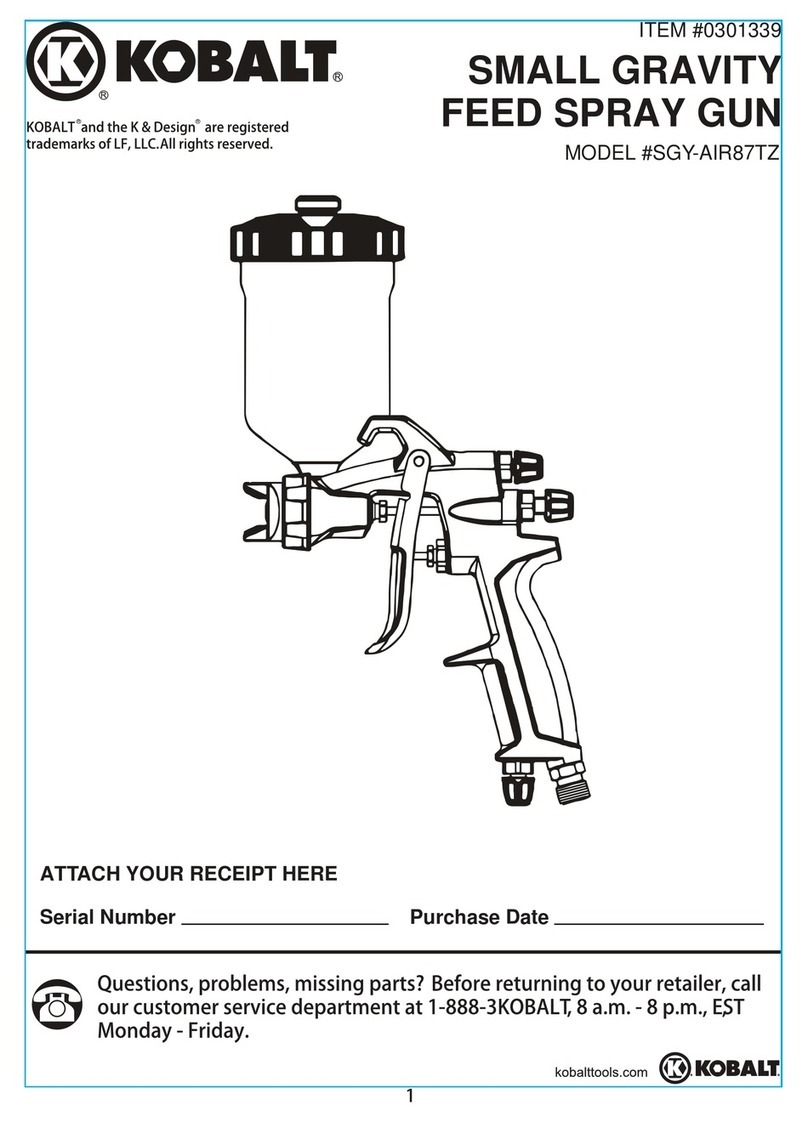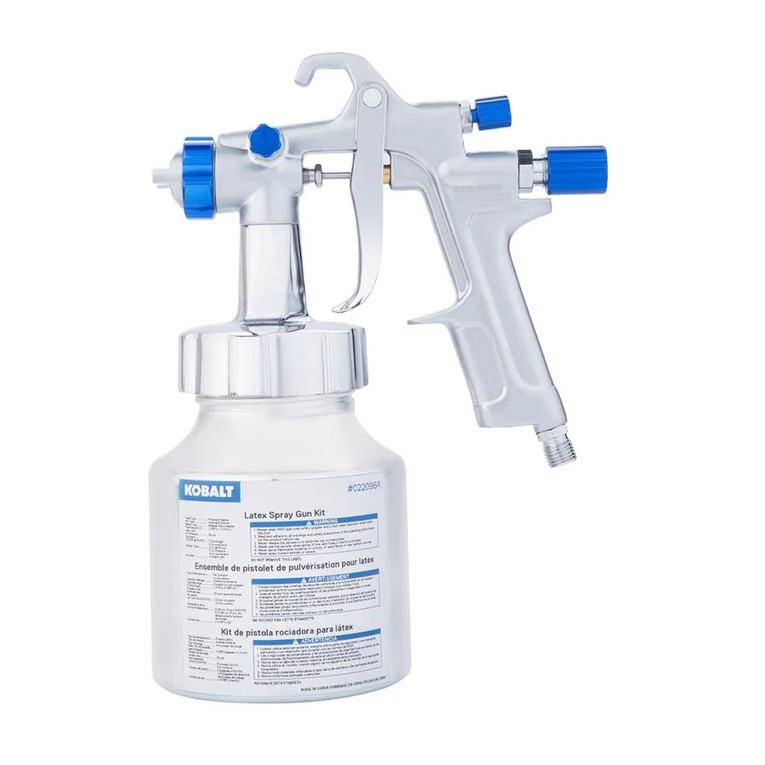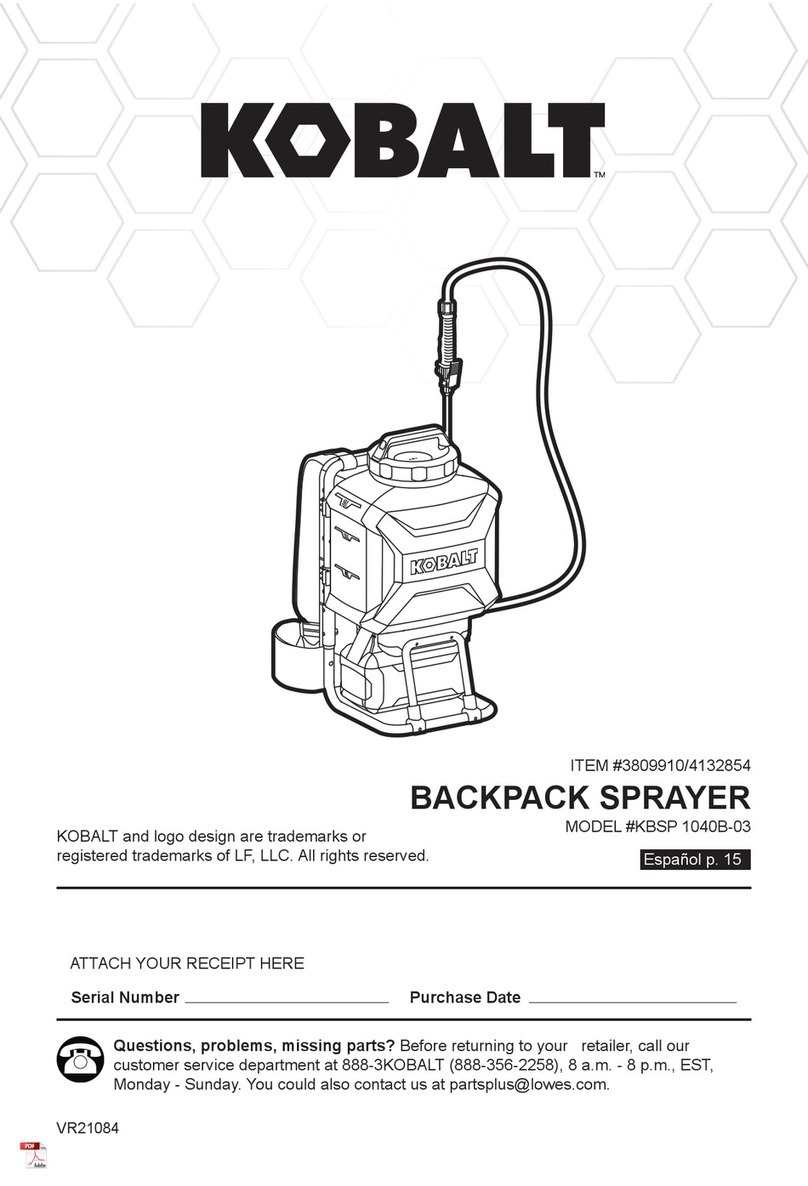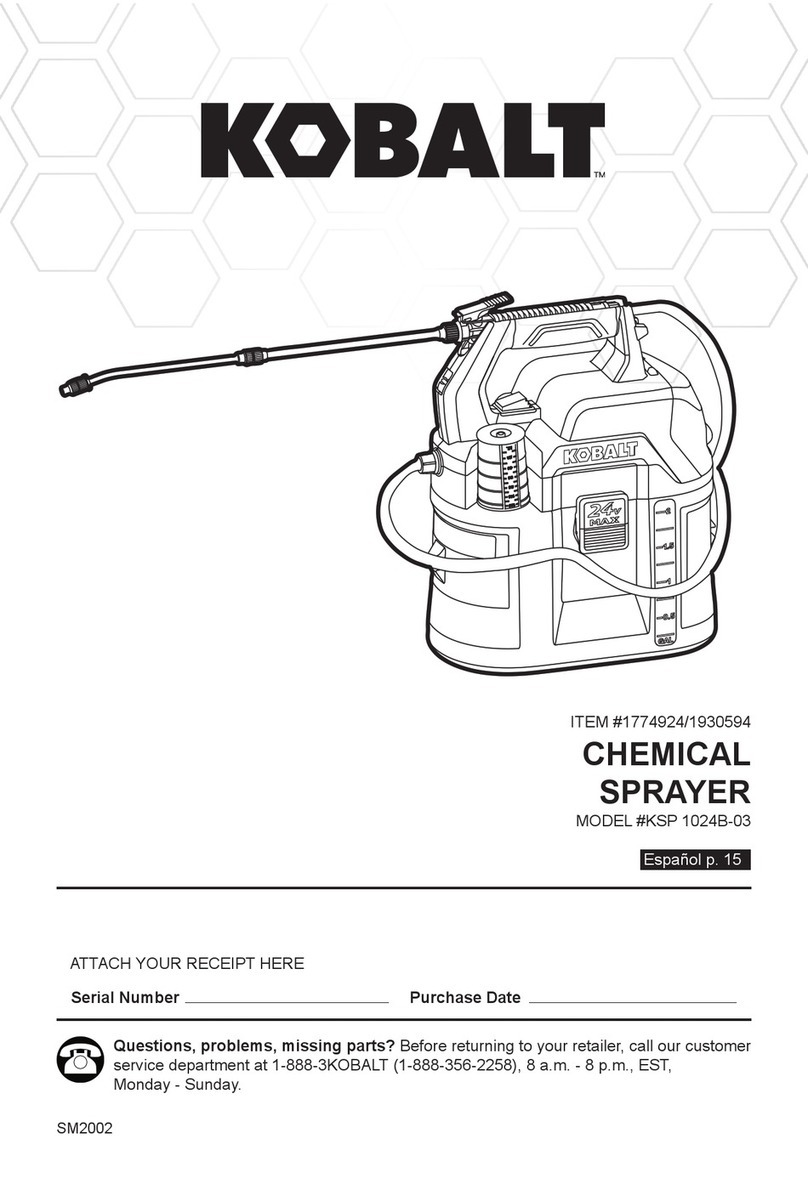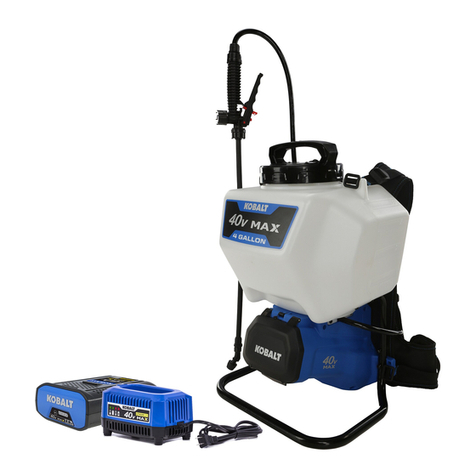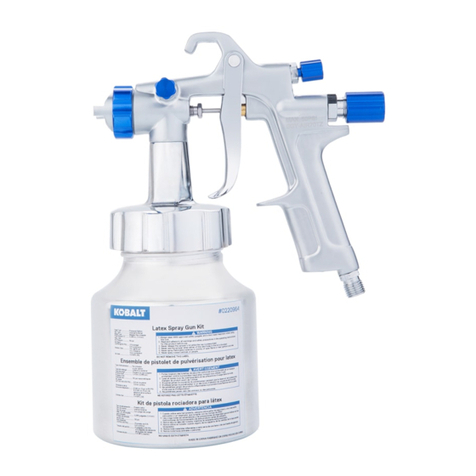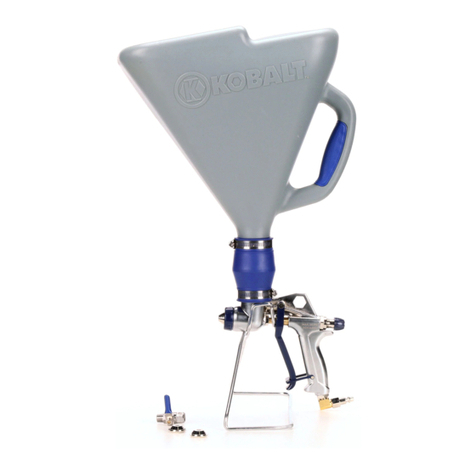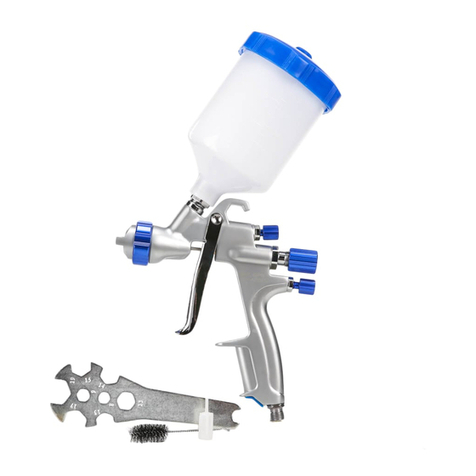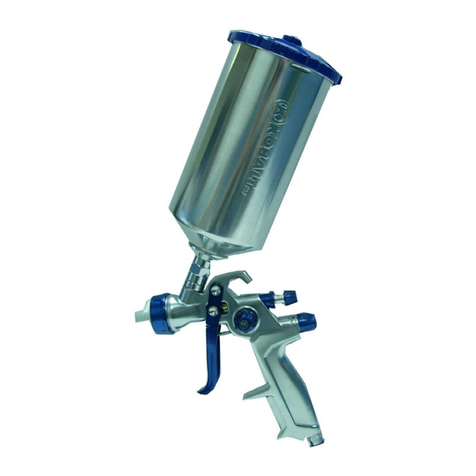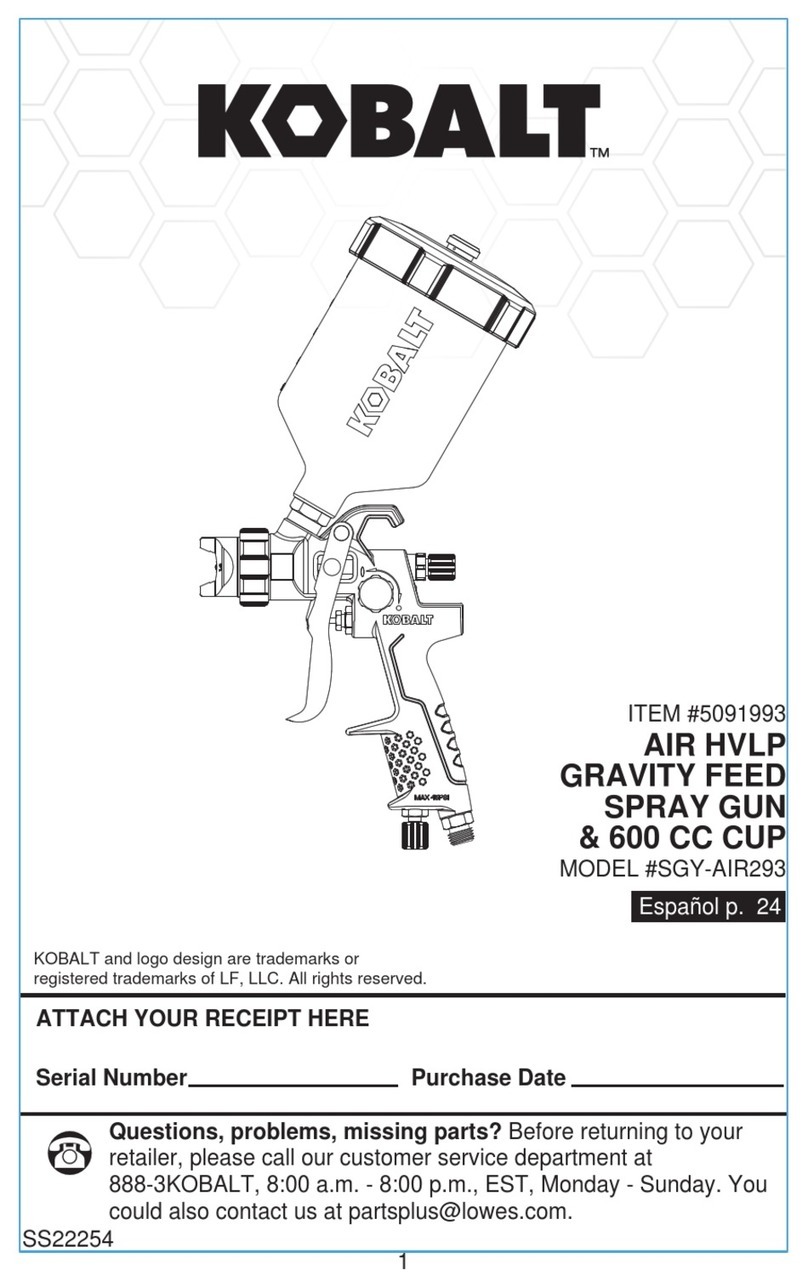3
SAFETY INFORMATION
Please read and understand this entire manual before attempting to assemble, operate
or install the product. If you have any questions regarding the product, please call
customer service at 1-888-3KOBALT, 8:00 a.m.-8:00 p.m., EST, Monday-Friday.
During cleaning and flushing, solvents can be forcefully expelled from fluid and air
passages which may cause eye injury. Be sure all others in the area are wearing impact
resistant eye and face protection. Even small objects can injure eyes and cause
blindness.
Before changing accessories, when making repairs, and or when tool is not in use,
always first shut off air supply and release / drain air pressure from hose. Then
disconnect tool from air supply or hose and store in a safe location.
Always have control of the air hose.
Never direct air at yourself of anyon else.
Whipping hoses can cause serious injury. Always check for damaged or loose hoses
and fittings. Never use quick change couplings at tool. They add weight and could fail
due to vibration. Instead,add a hose whip connect coupling between air supply and
hose whip ,or between hose whip and leader hose.
Always use the tool at a safe distance from other people in the work ares and ensure
work area is safe at all times.
Do not allow children to operate tool.
Maintain tools with care.Keep tools clean and oiled for best and safest performance.
Follow instruction for lubricating and changing accessories. Wiping or cleaning rages
and other flammable waste materials must be placed in a tightly closed metal container,
and disposed of in a proper manner.
Do not wear loose clothing, jewelry, or anything that may get caught or tangled when
using the tools.
Keep proper footing at all times , do not overreach , as slipping ,tripping, and or falling
can be a major cause of serious injury and or death.Be aware of excess hose left in the
working area or work surface. Do not abuse hoses or connectors. Never carry the tool
by the hose or yank it to disconnect it from power supply. Keep hoses away from heat,
oil, and sharp edges. Check hoses for weak or worn connections before each use and
make certain that al connections are secure.
Whenever possible ,secure work with clamps or vise so both hands can be free to
operate the tool.
Repetitive motions, awkward positions and exposure to vibration can be harmful to
hands and arms.
Adequate exhaust must be provided to keep the air free of toxic materials. Use proper
work clothing to avoid direct skin contact. Use a proper respirator whenever possible,
hands and arms. or if there is a chance of inhaling sprayed materials. The mask must
be compatible with the material(s) being sprayed. Contact the material supplier for
further details.
Solvent and coatings can be highly combustible especially when sprayed.
High sound levels can cause permanent hearing loss. Wear ear protection.

